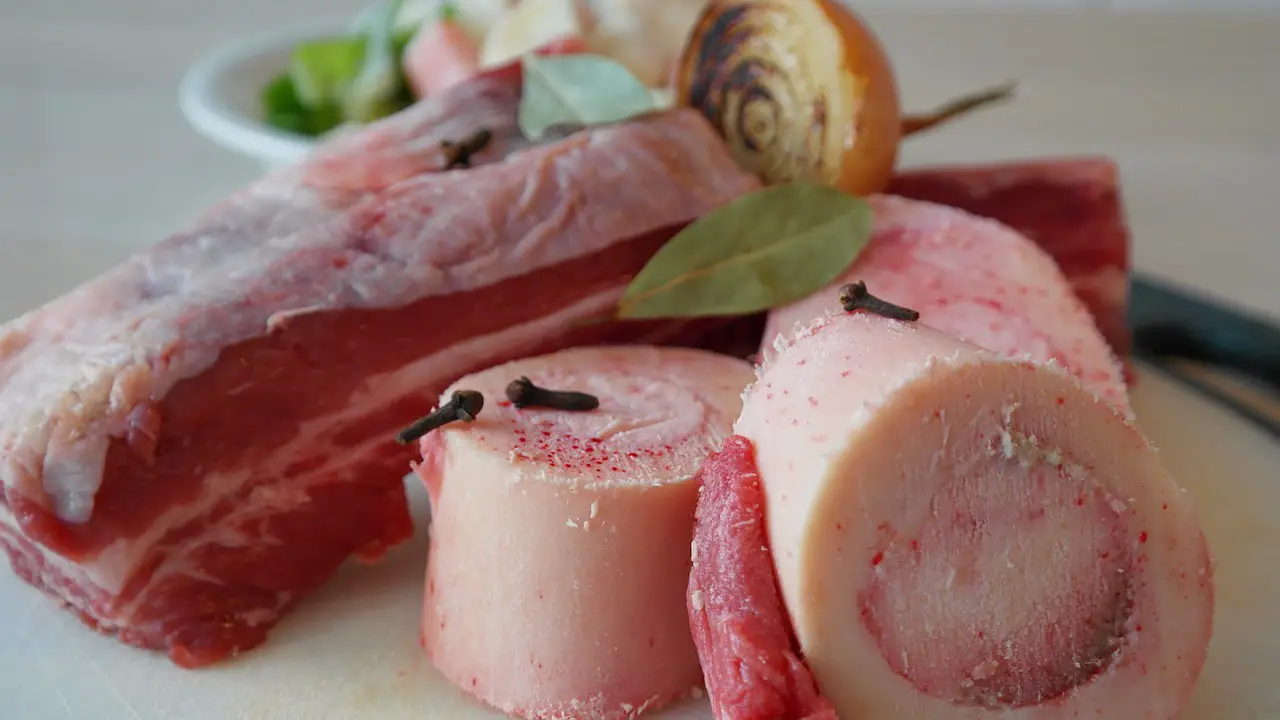What’s the Difference Between Beef Shank and Lamb Shank?
There are a few differences to look out for between beef and lamb shanks: first, the texture of the meat. Beef shanks will be tougher than lamb, as it is more dense. Second, the flavor profile. Lamb shanks will have a more pungent flavor as they contain more fat and connective tissues, which give it that distinctive lamb taste. Third, the price. You’ll find that beef shanks are cheaper than lamb shanks, but you can also find them in larger portions if you need a whole meal’s worth of protein for your family or party guests. Here are five tips on how to cook a perfect beef or lamb shank!
What Is a Lamb Shank?
A lamb shank is a cut from the lower part of the leg of the animal. It is usually roasted in a pan, braised, or slow-cooked. Lamb shanks are rich in flavor and contain more fat and connective tissues than other cuts of meat, which gives it that distinctive lamb taste.
What Is a Beef Shank?
A beef shank is a cut of meat from the shin, or lower part of the leg. It is a tough cut that requires a longer cooking time to tenderize and break down the collagen in the meat.
It’s a popular cut for braising, which means cooking it very slowly in a liquid over a long period of time. This makes it melt-in-your mouth tender and flavorful.
Differences to Look Out For
Beef shanks are tougher than lamb, so you’ll want to cook it for a longer time. Lamb should be cooked for about an hour and a half. And when cooking beef or lamb shanks, don’t forget to add vegetables! You can use any type of vegetables that you have in the refrigerator.
If you’re serving a crowd, try purchasing a whole beef shank instead of individual pieces. This will provide more protein per person and will be cheaper overall for feeding your guests.
Lastly, always have all your ingredients ready before you start cooking, especially with large cuts of meat. This will save you time and frustration when trying to set the table at the same time as preparing dinner.
Tips on How To Cook a Perfect Beef or Lamb Shank
Preparing a beef or lamb shank for the oven can be tricky. To get that perfect, melt-in-your-mouth texture, it needs to be cooked for hours. So what are the tips?
1. Season your shank with salt and pepper before cooking. This will bring out the natural flavors of the meat while also adding flavor to the sauce you pour over it later on.
2. Place your shank in a pot with enough liquid (broth, wine, vegetable stock) to cover it by at least an inch or two and then cook over low heat for 4 hours or more.
3. You need to cook your shank slowly, so take care not to overcook it! The meat should never reach an internal temperature of more than 160 degrees Fahrenheit (71 degrees Celsius). That means taking your pot off the heat when it reaches 160 degrees Fahrenheit (71 degrees Celsius), never letting it go above 170 degrees Fahrenheit (77 degrees Celsius), and keeping a close eye on your meal so you don’t overcook it!
4. When you take your shanks out of the pot, place one in a deep dish and top with its own sauce before serving hot along with potatoes or noodles on the side.
5. If you’re looking for an alternative cooking method, try baking your meat until browned in a 350-degree oven for 30 minutes then tossing into a pan with butter and onions before pouring in any excess juices from the baking pan
Tips for Cooking Beef Shank
1. Season the meat well.
2. Brown the meat on all sides.
3. Add a little bit of oil, onions, and garlic to the pot and sauté for a few minutes before adding water and cooking the shank for two hours on low heat with a lid on top.
4. Remove the shanks from the pot and set them aside to cool for about ten minutes before shredding or cutting into chunks for serving.
5. You can add vegetables to the stew such as carrots, potatoes, turnips, celery, and other hearty vegetables that can handle longer cooking times without breaking down too much in flavor or texture.
Tips for Cooking Lamb Shank
1. Marinating the shank will create a more tender texture.
2. The temperature for cooking lamb shanks is about 275-300 degrees Fahrenheit.
3. You’ll need to cook lamb shanks for 2-2 1/2 hours, depending on their size and fat content.
4. Make sure to baste the meat with a marinade or sauce during the cooking process to keep it moist and tender.
5. Let the cooked lamb shanks stand for 10-15 minutes before serving so that you can enjoy them at their best!
Conclusion
If you’re looking for a slow-cooked, hearty dish to please your family and friends this winter, we’ve got you covered. A lamb shank and beef shank are both flavorful and juicy, and can be prepared in a number of ways.
Both muscles are large and tough, need to be cooked low and slow to break down their connective tissue. If you want to make the most of your meat, make sure to use a lower temperature and cook for a longer period of time.

